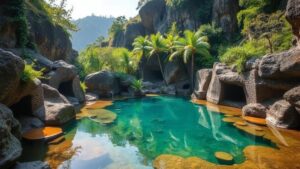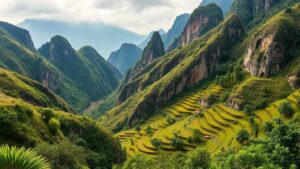The environmental impact of exploration in fragile ecosystems like deserts or rainforests.
The Environmental Impact of Exploration in Fragile Ecosystems
Exploration in fragile ecosystems such as deserts and rainforests poses significant environmental challenges. These areas, characterized by delicate biodiversity and unique climatic conditions, are profoundly affected by human activities. This article delves into the various impacts of exploration in these ecosystems and offers insights into mitigating these consequences.
Understanding Fragile Ecosystems
Fragile ecosystems are regions that are particularly sensitive to disturbances and can easily suffer from ecological damage. Rainforests, like the Amazon Basin, cover approximately 5.5 million square kilometers and are home to at least 10% of the worlds known species. Deserts, on the other hand, such as the Sahara, span roughly 9.2 million square kilometers and host specialized flora and fauna that have adapted to extreme conditions.
The Impact of Exploration Activities
Exploration activities, including mining, drilling, and deforestation, often disrupt these sensitive environments. For example, the exploration for oil and gas in the Amazon has led to widespread deforestation and habitat fragmentation, which, according to a study by the World Wildlife Fund in 2020, has resulted in a 20% decline in species populations.
- Habitat Destruction: The removal of vegetation for exploration can destroy habitats essential for survival. National Oceanic and Atmospheric Administration (NOAA) has documented cases where oil spills in marine environments have led to significant declines in both fish and bird populations.
- Soil Erosion: Activities like mining disturb the soil, leading to erosion. This disruption not only affects plant growth but also increases sedimentation in nearby waterways, affecting aquatic ecosystems.
- Pollution: Exploration often introduces pollutants into the ecosystem. For example, mercury used in gold mining can contaminate rivers, affecting both wildlife and human populations reliant on these waters.
Case Studies of Exploration Impact
Several case studies underline the environmental consequences of exploration in fragile ecosystems. One notable instance occurred in the Niger Delta, Nigeria, where extensive oil drilling has led to severe environmental degradation. According to a 2018 report by Amnesty International, oil spills have ravaged the landscape, resulting in loss of biodiversity and negatively impacting the livelihoods of local communities.
In contrast, the arid landscapes of the Mojave Desert in California also face similar threats through mining operations. The U.S. Bureau of Land Management notes that mining activities disrupt local habitats, endangering species like the desert tortoise, which is listed as a threatened species under the Endangered Species Act.
Mitigation Strategies
Efforts to mitigate these impacts are crucial for preserving fragile ecosystems. Strategies include regulatory frameworks, sustainable practices, and the development of restoration programs:
- Regulatory Frameworks: Governments can enact stricter regulations on exploration activities to minimize damage. For example, Brazils Forest Code mandates that 80% of land in the Amazon must be preserved, thereby limiting deforestation.
- Sustainable Practices: Useing sustainable resource extraction methods can reduce ecological footprints. Selective logging, for example, allows for the harvesting of timber without complete deforestation, maintaining habitat integrity.
- Restoration Programs: Successful restoration programs can rehabilitate damaged ecosystems. The Bonn Challenge, initiated in 2011, aims to restore 150 million hectares of deforested and degraded land by 2020, with ongoing efforts in various countries.
Real-World Applications and Future Considerations
The balance between exploration and environmental conservation is achievable through cooperative efforts. For example, companies like Patagonia are implementing environmental impact assessments before initiating exploration and committing to offset any unavoidable damages by investing in conservation projects.
Also, individual choices can also play a role. Consumers can support sustainable brands and advocate for responsible exploration practices. As awareness of these issues grows, the integration of ecological considerations into exploration activities will not only protect the environment but also ensure that future generations can enjoy the Earth’s biodiversity.
Conclusion
The environmental impacts of exploration in fragile ecosystems are profound and far-reaching. By understanding these impacts and implementing thoughtful strategies, it is possible to balance the needs of human development with the preservation of our planets vital ecosystems. Sustainable exploration can safeguard these vibrant regions while allowing us to meet our resource needs responsibly.


